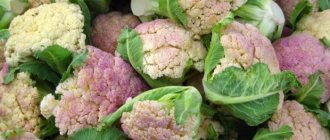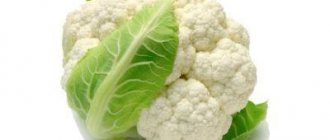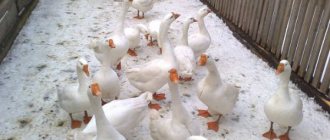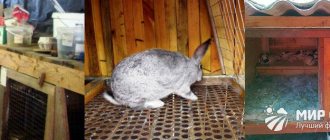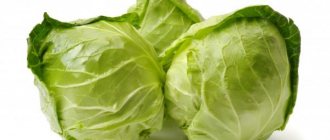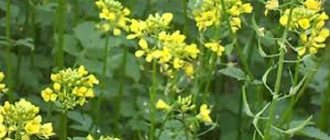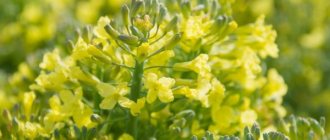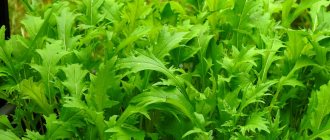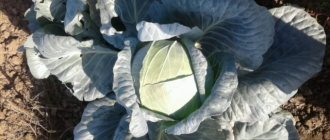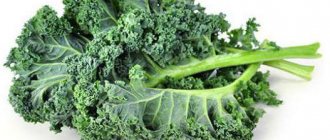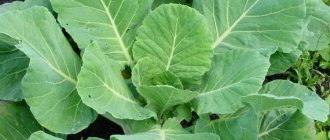Description of cabbage
Cabbage is a genus of one- and biennial herbaceous crops of the Brassicaceae (Cruciferae) family, including about 100 species. Among them are mustard, turnip, rapeseed, rutabaga.
For Russian gardeners, in the Cabbage family, the most common are white, red, Brussels sprouts, cauliflower, Savoy cabbage, broccoli and kohlrabi. The latter species ripen early, in June-July, the former can ripen until November.
Types of cabbage
The most common white cabbage is a biennial plant with a fleshy tap root and broad leaves that overlap each other to form a head.
The product has valuable nutritional properties. Due to the high content of vitamins and fibers, it is prescribed for atherosclerosis, bronchitis, and intestinal atony as part of the diet.
The plant is grown through seedlings. It is planted in light soil, moisture-absorbing, but permeable to liquid.
Attention! To simplify cultivation, you need to purchase seed material that is zoned for a specific region - it is treated with a composition against parasites and diseases.
BY THE WAY. Preparing a nursery
By the way, it is not at all necessary to clutter the window sills with seedlings in the spring. You can also get it (and very high quality one) in the garden. But for this we need to work hard now - to prepare a nursery. Mid-October is the time.
We choose land (1 sq.m.) in the highest, sunny place. We spread plastic wrap there. Pour a mixture of turf soil with humus (in equal parts) and an eighth of sand onto it. The soil layer should be approximately 10 cm (five buckets). To prevent a swamp from becoming a nursery, the edges of the film must be folded down. We leave all this “economy” to winter. And in the spring we sow seeds in the nursery and spread a covering film on top. The seedlings will turn out amazing - strong, squat, dark green. By the way, the quality of future cabbage depends 80 percent on the seedlings.
Of course, growing cabbage is a troublesome task. But grateful. After all, this vegetable is a storehouse of nutrients. In particular, cabbage leaves contain almost the entire set of vitamins necessary for humans: A, B, C, etc.
Principles of hardening cabbage seedlings
To increase the likelihood that cabbage will withstand lower temperatures, you need to harden off the seedlings.
The procedure involves lowering the ambient temperature, increasing the level of lighting, and increasing air access. Temperature indicators are reduced to +7-8 °C at night and +14-15 °C during the day.
To do this, at the appointed time, you need to start taking containers with seedlings outside. The time of contact with the environment is increased daily. If frosts are not expected outside, then you can not bring the boxes into the house for the last 2-3 days before planting.
The start date for the hardening procedure is set approximately 2 weeks before planting in the soil.
For reference! After hardening, cabbage seedlings can withstand temperatures down to -3 °C.
White cabbage photo
Rules for growing hardened seedlings
To prevent cabbage from getting caught in frost, you need to know what to do to prevent the situation. Each variety of vegetable has its own planting and harvesting dates. Late varieties are more able to tolerate temperature drops below 0. These seedlings are intended for storage and pickling.
Late varieties of cabbage are planted before April 20. Cauliflower does not withstand low temperatures well, so it needs conditions 5-6 degrees higher than when growing white cabbage.
It is not recommended to harden the sprouts for more than 3 weeks, as this will reduce the yield of the crop and slow down growth.
Effect of low temperature
The effect of frost affects the varieties and varieties of vegetables differently. Some species are frost-resistant down to -10 degrees, while others are unable to withstand even a thermodynamic parameter close to zero. Unresistant varieties become diseased, requiring immediate rehabilitation. Therefore, each type of cabbage is affected individually by low temperatures.
For seedlings in spring
To obtain healthy and strong seedlings, it is important to observe the thermodynamic parameters of soil and air at different phases of seedling development. After sowing the seeds, cabbage sprouts appear already at +5 - +10 degrees. However, seedlings growing at low temperatures are often affected by blackleg and rot. Therefore, you should not allow the thermodynamic parameter to drop below +10 degrees.
For culture in the fall
In autumn, the crop tolerates cold well. Red and white cabbage are rarely harvested before the first snow falls. The vegetable will easily tolerate frosts down to -7 degrees, provided that its thawing is gradual. Cauliflower and Brussels sprouts can withstand a decrease in the thermodynamic parameter only to -1 degree, provided that the cooling period is short. Otherwise, the frostbitten areas will block the flow of oxygen inside the head of cabbage, and the plant will develop a nebula in the heads. The disease will lead to rapid rotting, and the plant will become unfit for consumption.
Important! Vegetables grown without seedlings are characterized by increased frost resistance. Having selected the variety or hybrid you like, you can sow the seeds directly into the ground. In this case, energy and time are saved, and young seedlings will have increased immunity to unfavorable conditions.
Methods of frost protection
At what temperature cabbage freezes depends, among other things, on how properly it was seasoned. At the same time, there are several ways to protect cabbage plantings from freezing temperatures. To achieve the goal, they resort to folk remedies or scientific achievements.
Smoke
Almost the most popular method of hardening seedlings, used for several decades. It consists of lighting several fires in an area that spread smoke over the area.
You need to make several fire pits consisting of 3 layers. The main task is for the material for the fire to heat slowly and smolder. Wet sawdust, straw, and small brushwood cope with this task.
For reference! To carry out the procedure correctly, you need to lay a layer of dry material on the ground and wet material on top of it. 3rd layer - soil, make a small hole in the middle. The fire is lit before night and must continue to smoke until sunrise.
Sprinkling
The method begins to be used when the ambient temperature approaches 0 degrees. Place a watering can with the smallest spray nozzle on the hose for irrigating the garden, and completely pour over the sprouts. They become covered with ice, and as the material melts, it releases heat.
In the evening, before frost, the soil also needs to be irrigated. At night it will freeze, and when it turns into a liquid state again in the morning, it will begin to evaporate and will not allow cold air to reach the soil.
Top dressing
The method may seem strange, but fertilizers help increase resistance to freezing temperatures. Then the answer to the question whether cabbage will freeze at minus 5 will be negative. The timing of applying fertilizer for this purpose is 10-24 hours before frost, so that the composition has time to act on the seedlings.
The mechanism of action of the compositions is that they contain phosphates and potassium, which promote the accumulation of polysaccharides inside the plant. Excess water will go away, the balance will move towards cell sap. This will increase the freezing point of the sprout.
Hardening off cabbage seedlings
Thermal insulation
The easiest way to counteract frost is to insulate plants. In order to protect the shoots from low temperatures in the autumn, you need to place an improvised greenhouse over the cabbage. To do this, arcs are placed in the soil, onto which a covering material is pulled (this can be spandex or film).
It is permissible to place each sprout under a cap, which can be a cut-off plastic bottle or glass jar.
Prepare seeds for sowing
Before sowing cabbage seeds for seedlings, they must be prepared - selected, disinfected, soaked:
Select quality planting material
| |
| Treat the seeds There are several methods for disinfection. This is a mandatory measure to prevent fungal and bacterial diseases. Granulated seeds and seed-pellets covered with a colored shell do NOT need to be disinfected. The manufacturer has already done this. Method 1. Using potassium permanganate
Method 2. Disinfection with hot water
| |
| Soak the seeds before sowing To stimulate germination, the treated seed must be soaked. Method 1:
Method 2:
| |
| Enrich the sowing material with nutrients In order to strengthen the seedling material, activate the growth and development of plants, instead of water, solutions of preparations with microelements or an aqueous solution with natural ingredients are used for soaking. Soaking in “Epin”, “Zircon”:
Soaking in ash infusion:
|
What negative temperatures can cabbage withstand?
At what temperature does cabbage freeze in the garden in the fall depends on its type. This parameter is directly related to the density of the pulp and growing conditions.
- White cabbage. The situation in which cabbage is frozen and something needs to be done about it occurs after -5 °C for white cabbage. If the time for collection comes, it can withstand a decrease in the parameter by another 5 °C.
- Beijing. This species is less resistant to frost and will only tolerate -2 °C. A mature plant will not deteriorate down to -5 °C.
- Colored. Despite the dense pulp, the inflorescences can only withstand low temperatures for 2-3 days. The lowest parameter that is allowed in this situation is 2 degrees below zero.
- Broccoli. For broccoli, the situation will be comfortable, as in the previous case. When cabbage is ready for harvest, it can stand without signs of spoilage down to -5 °C.
"Lend your shoulder"
The main growth of heads of cabbage occurs not in the summer, but in September-October. They begin to set when there are eight or nine covering leaves. Sometimes inexperienced gardeners remove the top leaves in the fall and... ruin the “pantry”. The “naked” cabbage begins to build up its “clothes” again, that is, it spends its energy on things other than what is required for the season. As a result, for the winter it will be laid down “frail”, loose, without a hard head of cabbage, as it should be.
Instead of “undressing” the cabbage, today is the time to help it get stronger. For example, it is very important now to loosen the soil around the vegetable. Moreover, this must be done right up to harvesting, since then it is easier for the leaf to fill with carbohydrates and salts. Attention: the more leaves, the more nutrition the plant will receive. In addition, you need to pollinate the cabbage weekly with ash on wet leaves (so that it does not fall off), not forgetting about the soil. This is done both for feeding and against pests, which are also not dormant, despite the cool weather.
By the way, about the weather. There is no need to rush into harvesting cabbage. This is the vegetable that sits in the beds the longest and gets filled up, even if it’s not the month of May. Cabbage is not afraid of even light frosts. But if a noticeable “minus” hits at night, then, of course, she will suffer. In this case, there is no need to rush to cut it off early in the morning - let it gradually thaw on the vine. However, being late with harvesting is also fraught - the heads of cabbage will begin to burst and shoot.
Popular frost-resistant varieties
To exclude a situation where cabbage is frozen, you can pay attention to frost-resistant varieties.
Frost-resistant white cabbage
Here are a few names:
- Grunkol;
- Brauncol Tuscany;
- Hilds Ideal;
- Roodner.
But even using these varieties, in order to grow plants that will not freeze at the first frost, you need to harden them.
Cabbage is frozen in the garden, what to do?
It often happens that the gardener does not have time to protect the crop from night frosts and the cabbage is still exposed to negative temperatures.
In this case, naturally, the question arises of what to do if the cabbage is frozen. Experienced gardeners advise:
- If the exposure to sub-zero temperatures was short-term, then the forks should be collected and moved to a cool (not hot) place. Wait until they thaw, then remove the top leaves. This crop is not suitable for long-term storage, but the vegetable can be eaten immediately or processed.
- If the head of cabbage is completely frozen, the situation is worse. However, in this case, you can try to use the crop. Some housewives cut out the stalk and then ferment the vegetable. It is believed that it will ferment even faster, but the taste will differ from the standard one.
For reference! If the cabbage is frozen to a depth of five to six leaves, it will be stored for no more than 2.5-3 months.
A very interesting question is whether it is possible to salt cabbage that is frozen. Some housewives give a positive answer. But you need to carefully remove all rotten parts and prevent re-freezing. Well, the taste of such pickles will be worse; you won’t be able to achieve the usual crunch.
When growing cabbage on your own plot, you definitely need to understand the issue of hardening off the seedlings. Otherwise, sudden frosts can destroy the entire crop.
Adviсe
When growing agricultural vegetables, you should take into account some recommendations that will help make the gardener’s work easier, as well as improve the survival rate of plants. The main ones:
- Purchase seed material based on the climatic conditions of the region where cabbage will be grown. And also study what thermodynamic parameters the variety or hybrid can withstand.
- Prepare seeds for planting: disinfect with fungicides, treat with activator preparations.
- Do not allow the air temperature to rise at night when growing seedlings, as this will lead to depletion of the plants.
- Provide young seedlings with good ventilation and additional lighting at the initial stage of growth.
Knowing what temperature parameters each type of vegetable can tolerate and following basic agrotechnical practices when growing, getting a good harvest of cabbage will not be difficult.

